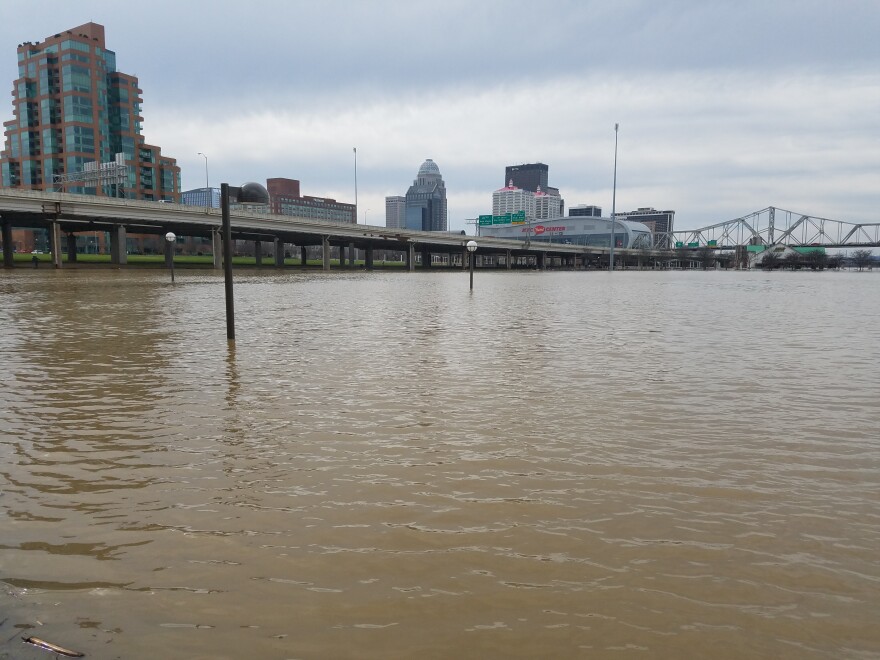This edition of Science Behind the Forecast originally aired in February 2020.
Bill Burton: And it's time for us to take a look at the Science Behind the Forecast with WAVE 3 meteorologist Tawana Andrew. Good morning, Tawana.
Tawana Andrew: Good morning. How are you?
BB: I am great. I'm kind of hungry, though, but we'll get to why that is, though, here in a minute. Today we're talking about flooding, and what do we need to know about flooding?
TA: Well, February in Louisville is the second most common time to have flooding on the Ohio River. And actually, across the United States, more deaths occur each year from flooding than any other thunderstorm hazard we're talking including tornadoes, lightning, all of that. Most of the deaths are from flooding.
BB: Water, flooding. Okay.
TA: Exactly. And the CDC actually says that half of all flood related drownings happen when people are driving their vehicles into flood water. No, you can't make it. Turn around, don't drown. Don't even try. The second highest percentage people walking near or into flood water. Don't do that either.
BB: Stay away from the flood water. If you're not near it, don't go near it.
TA: Exactly. Just six inches of rushing water can knock down an adult, and it only takes a foot of water to carry away most cars. Two feet of water can wash away your trucks and SUV. So yeah, your trucks and SUVs, I don't care if they have four wheel drive, you're not getting through it.
BB: No, no, that's not a lot of water. So respect the water. Stay away from it.
TA: Exactly. And our main types of flooding that we get in Kentucky, Indiana, flash flooding and river flooding. So flash flooding usually occurs within the six hours of the immediate cause, so that could be heavy rain, a dam failure or ice or debris jam in a river. You can have many causes, but most of the time it's excessive rainfall that causes flash flooding from either multiple thunderstorms, training or tracking over an area or a very slow moving storm. And flash flooding is a really big issue in a city like Louisville, because you have all this asphalt and concrete and the water has nowhere to go because it can't go into the soil. And you have to think about also the hillier areas as well. In our area, think of the knobs, or think of towards the Highlands. You have all these hills, and the water has to go somewhere, so you can have flash flooding in hilly areas as well. Something else to think about, of course, is river flooding, the Ohio, it's right here. So that typically happens, of course, when rivers overflow their banks into areas that are typically dry, so you can have snow melt or heavy rain that can cause river flooding. And there's definitely several categories that the National Weather Service has for river flooding, minor, moderate or major. And certainly you don't want any flooding at all, of course. And I was looking through the data for last year, and 66% of the people who died in the US from flooding were in their vehicles.
BB: Two thirds, wow.
TA: That's a lot of people, and I think there's a lot of people who have a bit of confusion as to the types of watches, warnings and advisories that you can have for floods. So I'm gonna do my best to try and break it down a bit. So for a flash flood warning, that means you have to do something right now, for example, if someone has a cookie right in your face, you are going to eat the cookie, you are taking action. So flash flood warning. You eat the cookie, you do something right now. If you have a flood warning, that means something is imminent or occurring. So if there's a cookie in your vicinity and you're going to do something about it.
BB: Cookie in the vicinity.
TA: Exactly. A flood watch means to be prepared. That means there it's favorable for the flooding conditions to occur. So you have all the ingredients there for a cookie to be made. You just have to put them together. Hence, the cookie is eminent.
BB: The imminent cookie
TA: Exactly. There's a potential for a cookie. So be prepared for the cookie.
BB: There could be widespread cookie-ing.
TA: Exactly.
BB: Stay away from the water. If you're not near it, don't go near it.
TA: Exactly.
BB: So now we understand flooding better, and we also understand now why I'm a little hungry. I have to go get some cookies.
TA: You're welcome.
BB: It's Science Behind the Forecast with WAVE 3 meteorologist Tawana Andrew. Thanks for the knowledge, Tawana.
TA: Of course.
This transcript was edited for clarity.







